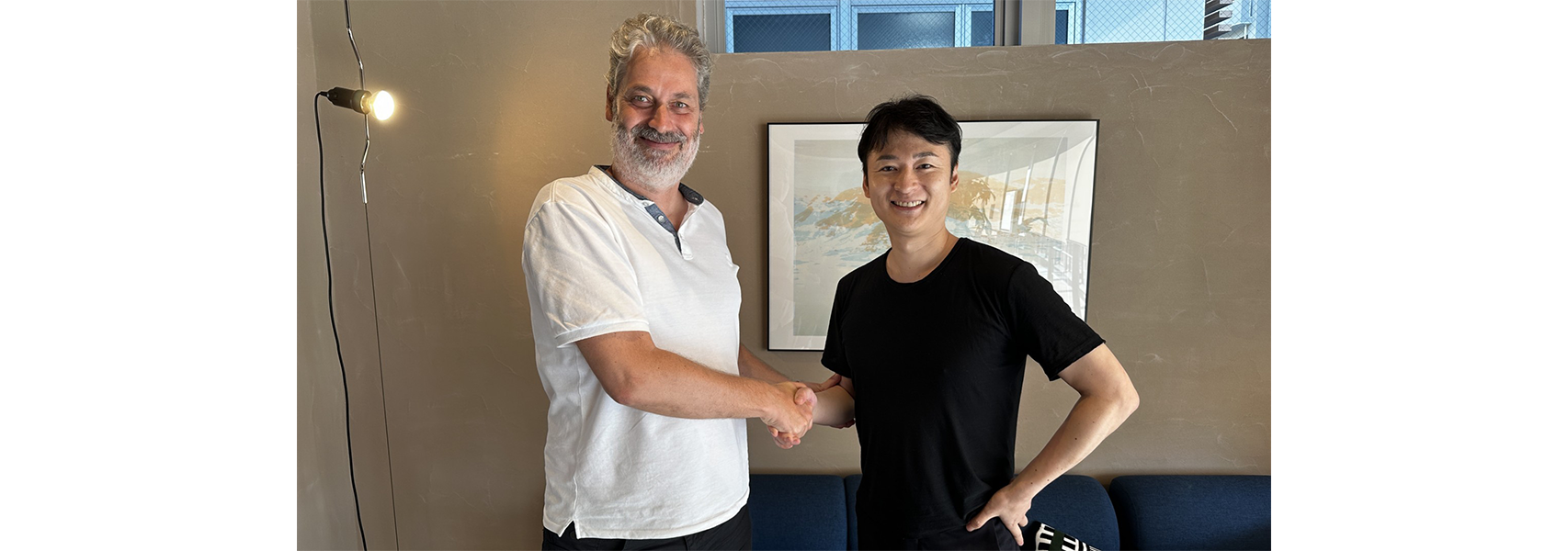A few months ago, Andreu shared this article from Corporate Rebels with me. In this article, Mr Yamada provided a concise overview of Yumemi, a corporation led by Mr Kataoka.
Who is Mr Yamada?
Mr Yamada is an entrepreneur that has been actively working to promote the new organizational order in Japan. He aims to facilitate connections between Japanese companies and the global landscape, while also importing international experiences to his country.
Fortuitously, I had planned to travel with my family to Japan this summer, so we decided to contact Mr Yamada to inquire about the possibility of arranging a meeting with Mr Kataoka. His prompt and efficient response delighted me. I was going to be granted an opportunity to share experiences, challenges, procedures, and more with the CEO of Yumemi. How lucky was I!
What did I do?
As a pleasant surprise, a few days later, Mr Yamada reached out again. He offered us the chance to meet Mr Nakamura, the driving force behind Colorkrew, an intriguing “super flat” company. This was an unexpected double opportunity that I eagerly accepted.
Before leaving for Japan we had an online meeting involving Mr Yamada, Andreu, and myself. We introduced Basetis, outlining our values, operations, and other aspects. The session evolved into a meaningful exchange of questions and insights, extending far beyond our anticipated duration.
Following a series of emails to coordinate schedules, we finalized plans to meet near Shibuya Station on Tuesday, July 28th.
Arriving in Japan on July 19th, my family and I embarked on an exploration of various places:
-
Kyoto: A city teeming with splendid temples, interactions with deer in Nara, and a memorable cycling tour around town.
-
Takayama: A picturesque mountain village that introduced us to the charms of onsens.
-
Hakone: Remarkable black eggs cooked in volcanic springs and stunning views of Mt. Fuji.
-
Tokyo: A bustling metropolis filled with people, illuminations, skyscrapers, and endless discoveries.
On the 28th in Tokyo, I encountered some challenges locating the designated meeting point (the city’s expanse can be quite bewildering). Eventually, after a brief exchange, we embarked on a subway journey to a nearby station. Our destination was a coworking space where Mr Yamada had arranged a meeting room.
My initial lesson: understanding the seating etiquette in Japanese meeting rooms, which varies based on hierarchy and respect. The seat farthest from the door is typically reserved for the most senior individual present. In this case, we offered this seat to Mr Kataoka.
Who is Mr. Kataoka?
Mr Kataoka, CEO of Yumemi, presides over an IT services organization that assists clients with B2C processes. The company comprises nearly 400 individuals, primarily web engineers, alongside a smaller number of UX/UI and AI engineers.
Even though we didn’t know each other, we started a very interesting conversation, building trust from the outset. Our conversation spanned numerous topics, covering our organizational practices, engagement, reward, environment, services, and commercial aspects. Initially scheduled for an hour, our conversation surpassed two hours!
What surprised me most about their organization was:
-
A preference for Slack over email as a primary mode of communication.
-
The CEO personally interviews all potential hires.
-
They have shifted to complete remote work since the pandemia.
-
They use banners and creative advertisements for internal communications.
-
Their reward process, where individuals seeking salary adjustments, consult with three others before making (themselves) a decision.
Who is Mr. Nakamura?
Following this enlightening meeting, we took a taxi to the Colorkrew office. Colorkrew operates as an IT product organization, led by Mr Nakamura. With a team of 80 individuals, they are specialized in developing successful SASS products for Japanese companies. On this occasion, it was Mr Nakamura who assigned me the farthest seat from the door in the meeting room. <3
Since the beginning, I had the same feeling as with Mr Kataoka: transparency and trust. Our conversation revolved mainly around people, and how hiring, rewarding, and engaging employees is managed in our respective organizations. Mr Nakamura shared a thought that struck me profoundly – his perspective on happiness. He likened organizational happiness to parenthood, emphasizing the importance of nurturing values, knowledge, tools, and behavior. He believes that happiness shouldn’t be a direct objective, comparing it to parenthood, where parents cultivate values and provide guidance. In his view, happiness will naturally follow. Additionally, he highlighted that personal growth and improvement involve an element of discomfort or suffering, though in a manageable dose, and that everyone has to understand it and feel comfortable with this notion is crucial in the organization. While my own conclusions are still evolving, our conversation proved genuinely captivating.
As our meetings concluded, I bid farewell to Mr Yamada, who had dinner plans with friends. I took a train back to the hotel to rejoin my family, continuing our exploration of Japan’s wonders.
I’m really thankful to Mr Yamada for making this invaluable experience possible. Feeling that other people are trying to build organizations similar to Basetis was very powerful. Sharing challenges, triumphs, uncertainties, and ideas with people with a similar mindset about how businesses should work, brought me a pleasant and comfortable sensation.

Comentaris